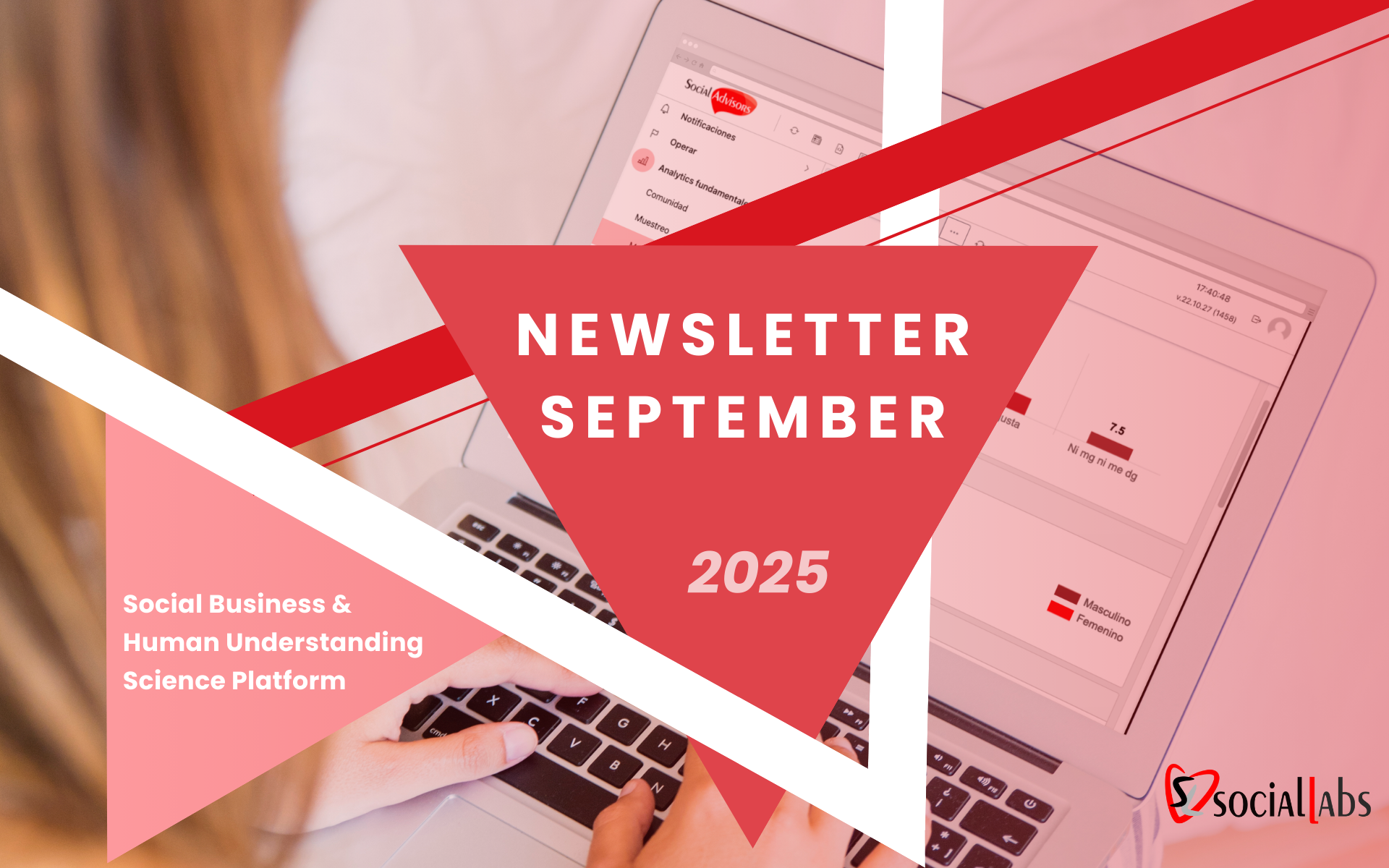At Social Labs, we are constantly working to update our Social Business Platforms to offer high quality and valuable software to our clients.
The following are the most recent updates from September 2021:

1. PROFILING IN PROJECT BY MULTI SURVEY
The novelty is to be able to segment and cluster by any variable of any mission that has been executed with the user: the segmentation and clustering of the counsellor community will no longer depend exclusively on the variables defined in the profiling survey.

The profiling survey will continue to be very important but only to select the advisors that will make up our community, but it will no longer be fundamental for the subsequent segmentation and clustering process as it will now be possible to segment and cluster by any variable of any survey type mission that has been executed by the advisor.
This gives us the possibility of segmenting and clustering without limit of variables and with this we will be able to do very segmented and precise market research (precision marketing) to obtain a very detailed and precise knowledge of the consumer.

2. IMPROVEMENTS IN PASSIVE TRACKING
It will now be possible to know the user's geographical sphere of influence in real time, through a detailed journey and tracking of the councillor's geographical positioning in real time. That is, where the counsellor is, or has been, when they have been, how long, what route they have followed, what patterns of geographical influence they have, on what days, and all of this in real time, visualised on maps and translated into specific places that are visible on Google Maps.
Passive tracking is a powerful mission for capturing insights that are generated consciously or unconsciously in the real (analogue) world, i.e. insights that are generated in the analogue world but sent to the digital world in real time. Having a journey and real-time geographic tracking of an advisor generates an infinite number of use cases, where only our imagination is the limit (sending offers in real time, directing consumers to specific places nearby or in their area of influence with offers and promotions, etc.).

3. MULTI CPG
This functionality is exclusive to the Social Market Platform, and allows shopkeepers to have integrated into their own Social Market app access to various CPG and/or wholesaler marketplaces, where they can offer their own catalogue of products segmented by type of shopkeeper, territory, their own offers and promotions, and even personalise the marketplace with their own notifications, logos, brands and colours.
This benefits CPGs and wholesalers, as they have their own marketplace for their customers, generating more sales, and shopkeepers as, from the same app, they can relate to different CPGs and/or wholesalers, facilitating adoption and increasing their business. This Multi CPG functionality turns the Social Market Platform into an "Amazon" for the traditional channel.

4. MULTI-TENANT
Evolution of the Platform to a multi-tenant architecture to allow a single cloud infrastructure and a single code development to serve multiple customers, brands, countries, etc. Each customer of the Platform is considered as a tenant, and this allows customisation of application elements, such as interface colours (per tenant), user list, chat, notifications, projects, missions, etc. per tenant, while reusing existing code and contracted cloud infrastructure to achieve significant economies of scale and cost optimisation.

It is aimed at large customers with large communities that want to customise its use by type of user (consumers, shopkeepers, vendors, employees, suppliers), brands, countries, etc. In order to be able to manage each tenant in a personalised way but ensuring a global economy of scale in terms of application software, data, cloud infrastructure, security and costs.

5. CONTROL PANEL OPTIMISATION
Performance improvements to ensure greater scalability and concurrency of use for large user communities. Improvements include better response time when answering missions, opening screens, exporting lists, accessing analytics, etc.

6. IMPROVEMENTS TO THE PAYMENT DISPERSAL PROCESS
Controls have been included to avoid sending duplicate payment dispersal files. An attempt to send a payment file that has already been sent will notify the administrator that this dispersal has already been sent, when and by whom, leaving the administrator to make the final decision that he/she considers to be the most optimal for management purposes.

7. IMPROVEMENTS CONSISTENCY IMPLEMENTATION
A series of measures have been established to improve the consistency of use and control of the Platform's activity, such as:
- Log of user activation/deactivation: from now on, it will be possible to know which day a user has been activated or deactivated and which administrator has done so in order to check whether it was voluntary.
- Unblocking users due to login error: the administrator will be able to unblock the login attempt when a user has exhausted the number of attempts from the user's file. This improvement offers greater freedom to the administrator and offers a quick solution to the user, facilitating the adoption and speed of deployment of the Platform.
- Locking missions: it will no longer be possible to edit a mission once it is in progress or completed in order to protect the app from human error and thus avoid confusion in the process of remuneration and dispersion of payments.

8. OPTIMISING AND IMPROVING THE USE OF ANALYTICS
Improvements have been made in the cube section to allow multiple selection in fields, limit records or add filters.
%20(1)%20copy.png)
.png)


